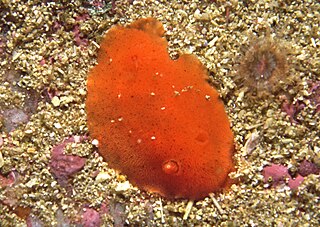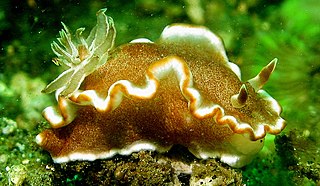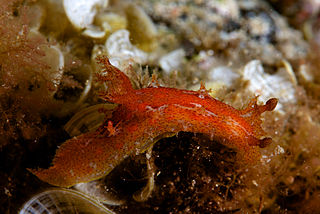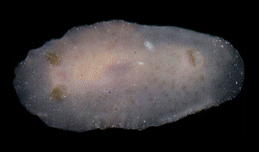
Chromodoris annae is a species of sea slug, a very colourful nudibranch, a shell-less marine gastropod mollusc in the family Chromodorididae.

Goniobranchus coi is a species of very colourful sea slug, a dorid nudibranch, a marine gastropod mollusc in the family Chromodorididae.

Chromodoris elisabethina is a species of very colourful sea slug, a dorid nudibranch, a marine gastropod mollusc in the family Chromodorididae.

Goniobranchus geminus, also known as the gem sea slug, is a species of very colourful sea slug, a dorid nudibranch, a marine gastropod mollusc in the family Chromodorididae.

Goniobranchus preciosus is a species of colourful sea slug, a dorid nudibranch, a marine gastropod mollusc in the family Chromodorididae.

Ceratosoma tenue is a species of colourful dorid nudibranch, a sea slug, a shell-less marine gastropod mollusk in the family Chromodorididae.

Ceratosoma trilobatum is a species of colorful dorid nudibranch, a sea slug, a shell-less marine gastropod mollusk in the family Chromodorididae.

Mexichromis trilineata is a colourful species of sea slug, specifically a dorid nudibranch. This marine gastropod mollusc is in the family Chromodorididae. In 2012 the genus Pectenodoris was included into Mexichromis.

Discodorididae is a taxonomic family of sea slugs, specifically dorid nudibranchs, marine gastropod mollusks in the superfamily Doridoidea.

Glossodoris rufomarginata, commonly called white-margin sea slug or caramel nudibranch, is a species of colourful sea slug, a dorid nudibranch, a marine gastropod mollusc in the family Chromodorididae.

Goniobranchus tennentanus is a species of colourful sea slug in the family Chromodorididae.

Chromodoris striatella is a species of colourful sea slug, a dorid nudibranch, a marine gastropod mollusc in the family Chromodorididae.

Hypselodoris maculosa is a species of sea slug or dorid nudibranch, a marine gastropod mollusk in the family Chromodorididae.

Thorunna halourga is a species of sea slug, a dorid nudibranch, a shell-less marine gastropod mollusk in the family Chromodorididae.
Thorunna kahuna is a species of sea slug, a dorid nudibranch, a shell-less marine gastropod mollusk in the family Chromodorididae.

Plocamopherus maderae is a species of sea slug, a nudibranch, a shell-less marine gastropod mollusk in the family Polyceridae.
Marionia levis is a species of dendronotid nudibranch. It is a marine gastropod mollusc in the family Tritoniidae and is found in shallow water in the Red Sea and Indian Ocean.

Jorunna spazzola is a species of sea slug, a dorid nudibranch, a shell-less marine gastropod mollusc in the family Discodorididae.

Cerberilla ambonensis is a species of sea slug, an aeolid nudibranch, a marine heterobranch mollusc in the family Aeolidiidae.

Platydoris angustipes is a species of sea slug, a dorid nudibranch, shell-less marine opisthobranch gastropod mollusks in the family Discodorididae.


















